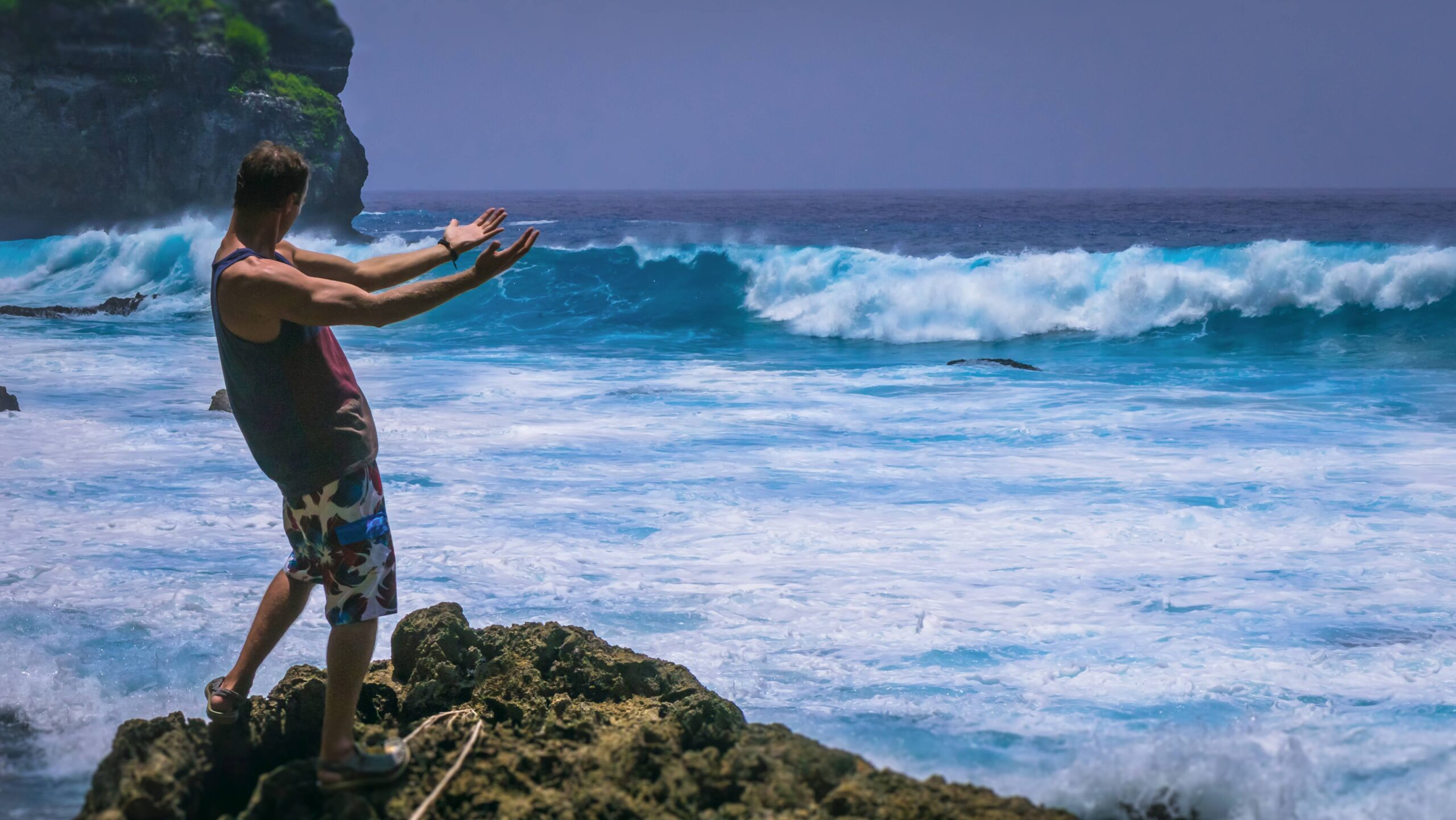One thing many people worry about when visiting Bali is the chance of a tsunami.
While it’s true that Indonesia has seen nearly two-thirds of all the deaths globally from tsunamis in recorded history, Bali has, so far, escaped most of the damage.
Let’s take a look at Bali, tsunamis and the risk of a tsunami hazard from the Indian Ocean suddenly cutting short your holiday or worse, bringing the ocean into your hotel bedroom. (Hint: It’s not that bad).
Why Is Tsunami Flooding So Severe?
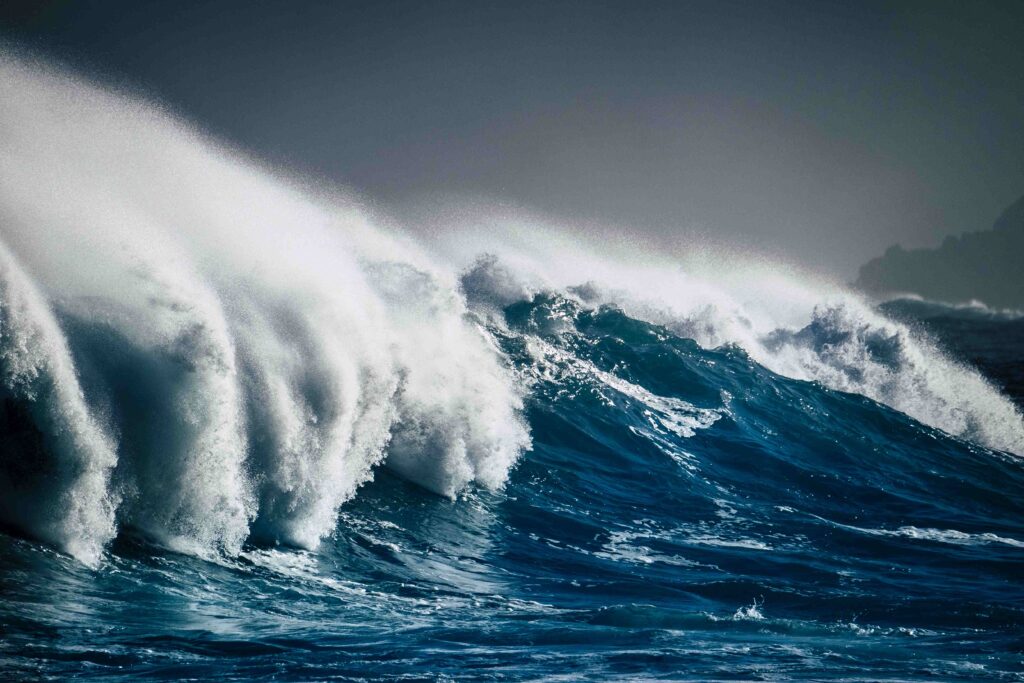
The reason that people are so afraid of tsunamis is that their flood damage carries far further inland than standard waves do.
In fact, a large tsunami can damage areas over a mile inland with flood waters.
This is because tsunamis have a particularly long wavelength and this allows the water to travel much further than a standard wave.
The time between waves in a tsunami can vary from 5 minutes to 2 hours, the bigger the gap, the larger the wavelength.
Where Are The High-Risk Areas For Tsunami Damage In Bali?

The three areas of Bali most a risk of tsunami damage are Kuta, Tanjung Benoa and Sanur as they are the most low-lying tourism districts with the most exposure to potential tsunami waves.
However, there’s no doubt that it’s possible for a tsunami to strike any coastal region on the island and as the global sea level rises due to climate change, it’s possible that other areas will become even more high risk.
It’s worth noting that Ubud is not at any risk of tsunami damage as it is too far inland for water from even the most cataclysmic of tsunamis to reach.
The Tsunami Hazard Warning System In Bali (Sirens)
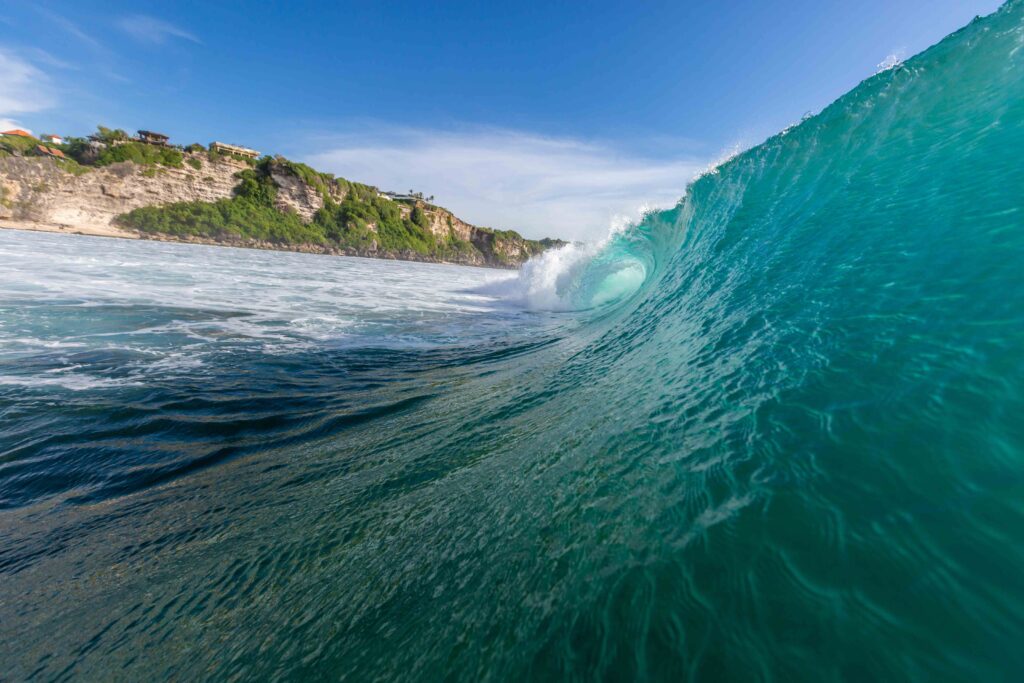
The good news is that Bali understands that tsunamis arising from volcanic activity of the active volcanoes on the island or from earthquakes caused by the meeting of one fault line with another in the ring of fire are a genuine risk.
The government installed a siren system in high-risk areas (Kuta, Tanjung Benoia, Sanur, Kendongan – which is just outside of Jimbaran, Seminyak and Nusa Dua).
If a tsunami is detected by the monitors in the Center for Disaster Mitigation in Denpasar, the sirens will sound for a three-minute continuous wail.
This gives anyone within range of the siren roughly 15-20 minutes to get further inland.
We should note that while the sirens are meant to be audible throughout each warning zone, tests suggest that they don’t always reach the farthest parts of the zone.
If it’s clear that getting further inland is impossible, you should consider a “vertical evacuation” which is when you opt to climb up to the highest floors of tall buildings or head for higher ground if possible.
We should also point out that if you’re in Tanjung Benoa, you must opt for vertical evacuation as the area is simply too flat and remote on the peninsula for you to get inland far enough in time.
The evacuation zones are divided into “red” and “yellow” zones. Anyone in a red zone must be evacuated the moment that the sirens sound according to evacuation plans but the yellow zones may or may not be evacuated depending on the nature of the threat.
Tips For Dealing With A Tsunami Hazard
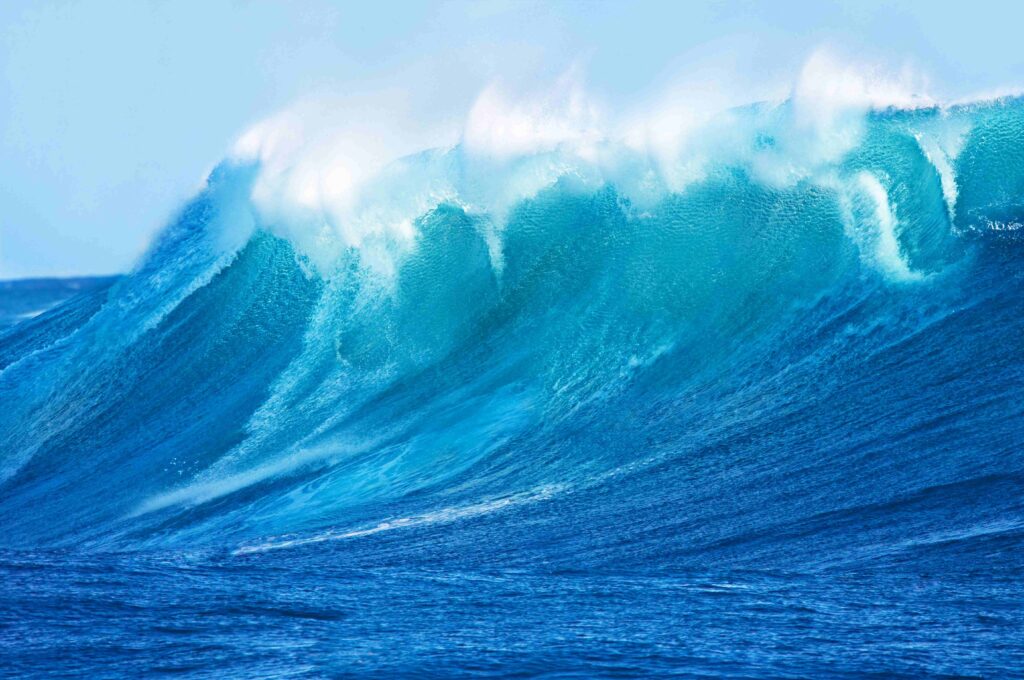
While it is unlikely that you will have to deal with a tsunami on your Bali holiday, you can take steps to deal with a tsunami here and they include:
Prepare for the worst case – if you’re staying in a vulnerable area, it’s a good idea just to look at the evacuation routes for the area and ensure you know what to do if the sirens go off.
Fully cooperate with your hotel and local authorities – you may be asked to take part in safety drills in your hotel. If that’s the case, you’re helping yourself prepare for the worst and ensure that evacuation processes work in the case of the worst eventuality.
Start moving when you hear the siren – the siren will sound for three minutes, but the earlier you react and start moving, the easier it will be to get to safety. If you don’t think that you can get inland fast enough, look for a vertical evacuation centre near you, immediately.
Assume the worst if there’s an earthquake – if you feel the ground shaking, it’s best to head inland for a while. If there’s no tsunami, great. If there is, you’ll be safer than waiting for a warning siren.
Listen to local media and check social media – you will find that warnings appear on TV, radio and social media and that instructions on what to do and where to go, etc. are easy to find on these channels.
How To Survive A Tsunami
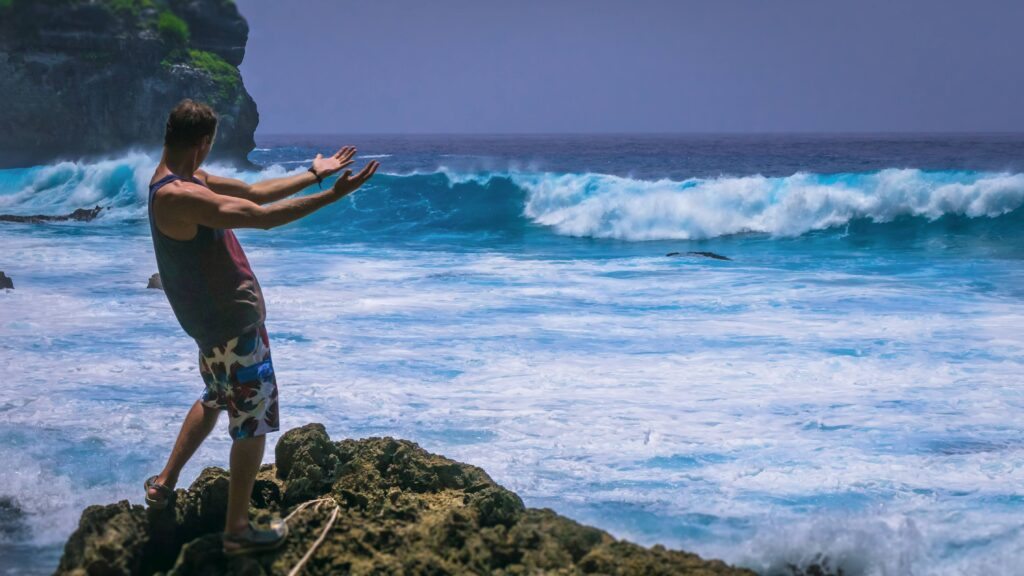
The advice given to survive a tsunami by the American government is as follows:
If there’s an earthquake follow earthquake safety protocols first before you deal with any tsunami threat
Get to higher ground and as far inland as you can get
Watch out for signs of a tsunami, the water surface is a good clue as a sudden rise in sea level or a complete draining of ocean water is a huge indication of a potential tsunami
Listen to emergency alerts and information and always obey instructions from local emergency teams and managers
Evacuate immediately – don’t wait. You don’t need an official warning to start using evacuation routes, the faster you move, the more likely that you are to be OK. In Bali, congestion in urban areas is a real problem, moving quickly can help you beat that congestion.
If you’re on a boat – you should head back out to sea and not return to land, the further out you can get, the better as the waves are likely to grow as they reach the coastline.
After a tsunami don’t wade into the water as it can contain dangerous debris.
Stay away from any buildings or structures showing damage.
If you are injured or need medical attention call for it, don’t try and travel.
FAQs
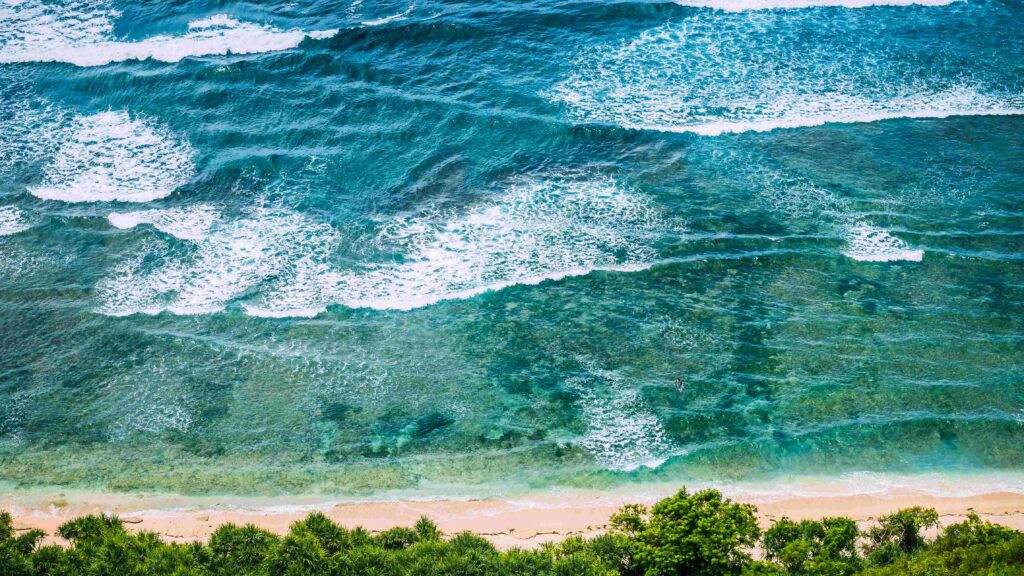
When Was The Last Time A Tsunami Hit Bali?
The last time a tsunami hazard was reported in Bali was in 1994 when an earthquake off the coast of Java resulted in high waves in coastal areas of both Java and Bali.
The tsunami source was evenly placed between the islands but the direction of the waves was mainly towards Java.
Eastern Java saw waves of up to 14 meters in height and 250 people died. However, in Bali, the waves only reached 5 meters.
Is Bali In Danger Of A Tsunami? Is There A Tsunami Threat To Bali?
Yes. Any place within the ring of fire is in danger of experiencing an earthquake and then those earthquakes might lead to a tsunami.
However, while natural disasters are always a possibility (and not just of an Indian Ocean Tsunami but also of an earthquake or volcanic activity) the risk is not so high that the Indonesian government or any other government recommends against travel.
Was Bali Affected By The 2004 Tsunami?
Yes, but not directly. As you might expect when there is major damage to one part of Indonesia, there’s a lot of movement around the archipelago as people try to seek safety.
However, there was no need to evacuate in Bali and the sea level did not change during the tsunami.
This was in stark contrast to Aceh which is a long way from Bali where thousands of people lost their lives.
How Many People Died In The Bali Tsunami?
There is no “Bali Tsunami.” The tsunami of 2004 had a horrific impact on Indonesia, Thailand and parts of Sri Lanka and India but despite this, there was no destruction in Bali and the weren’t even high waves around the island.
In fact, Bali is at the lowest risk of a tsunami that an island within the rings of fire could hope for. Even though the overall risk rating of a tsunami at some point in history is “high”.
The 2004 tsunami was the worst tsunami in recorded history and the worst natural disaster to occur in Indonesia, Thailand and Sri Lanka in recorded history, however, it did not directly impact Bali.
What Are The Odds Of A Tsunami In Bali?
We can’t state the odds of a tsunami in Bali with any confidence at the moment. Experts rate the chances of a tsunami as “high” but this doesn’t translate as specific odds such as 1 in 50 years or 1 in 100 years.
Final Thoughts On Tsunami Bali
Bali’s position between the Indian Ocean and the Pacific Ocean in the ring of fire means that it’s at risk of tsunamis.
However, tsunamis are not as common as you might think and the active volcanoes in Bali probably represent more risk to your holiday than a tsunami.
If a tsunami does occur, then following the steps above may help save your life.

